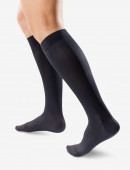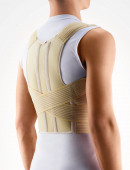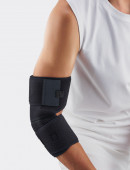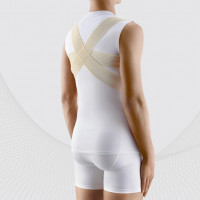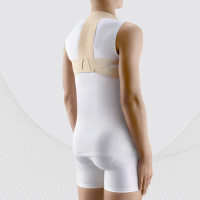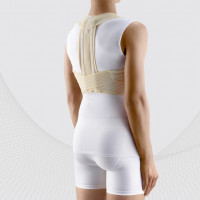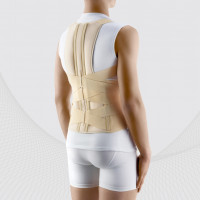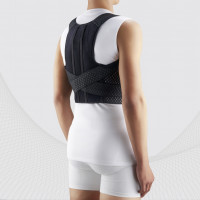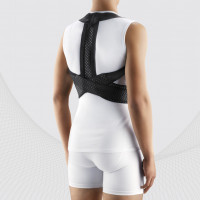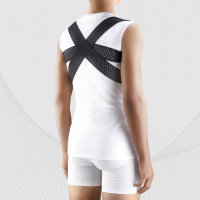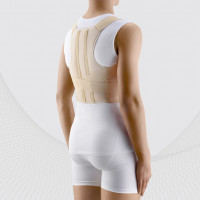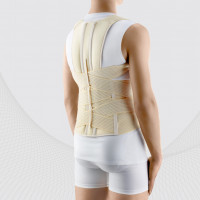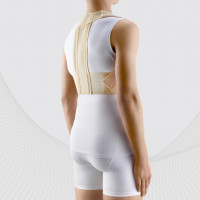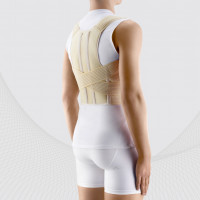For some of us, the mobile phone has almost become a natural extension of the hand. Everyone from kindergarten children to seniors, intellectual and physical workers, is “immersed” in smart devices. They are so addictive that the sense of time is lost, which has a negative impact on health, especially on your back. A study by Riga Stradiņš University shows that 76% of children aged 4–6 years old have asymmetrical posture and 50% have posture disorders. As children get older, the frequency and intensity of the problem increases. Diāna Silantjeva, physiotherapist at TONUS ELAST, explains how the use of mobile devices affects posture and how to improve it.
Stretch and “relax” your neck
Prolonged sitting with the head lowered leads to postural changes: rounded shoulders, a forward neck, and the physiological curvature of the neck (lordosis) flattens or even changes to kyphosis, where a hump can form at the base of the neck and the chest is compressed, appearing almost flat from the side. It becomes a habit and the physiological posture becomes uncomfortable. The modern term for this is “Text Neck Syndrome”. It causes headaches, tingling in the hands, impaired vision and difficulty concentrating. If you cannot avoid the prolonged use of smart devices, for example for work, it is better to hold the device at eye level while sitting with your back straight.
Anyone who spends their working day in front of a screen should remember the 20–20–20 rule: take a 20-second break every 20 minutes in front of the screen, looking 20 feet (6 metres) away.
See a specialist
If a person ignores changes in posture or deviations from physiological posture, sits or stands in asymmetrical postures, the asymmetrical strain on muscles, joints and ligaments increases, which over time can cause discomfort, pain, deformity and limitations in movement. Such changes develop over a long period of time, so unfortunately we often realise too late. This is why it is important to see a specialist regularly – a physiotherapist, rehabilitation therapist, vertebrologist or orthopaedic surgeon. The specialist will examine and assess your posture and gait, check muscle strength and length balance, and give you valuable advice on maintaining your posture. In addition to regular exercise, orthotics and posture correctors can provide good help.
Use “helpers”
Orthotics and posture correctors are not just for after injuries. Orthotics fix or stabilise a joint or part of the body, while posture correctors help to correct the thoracic spine by preventing it from rounding. They can be used by people whose prolonged sedentary work or forced posture has caused back strain. Wearing correctors for 30–40 minutes can relieve muscle strain but you should try to keep your posture correct after removing them.
Posture is not just a matter of aesthetics. It represents our health, well-being, as well as mental and emotional state, so it is worth taking care to maintain it properly.

